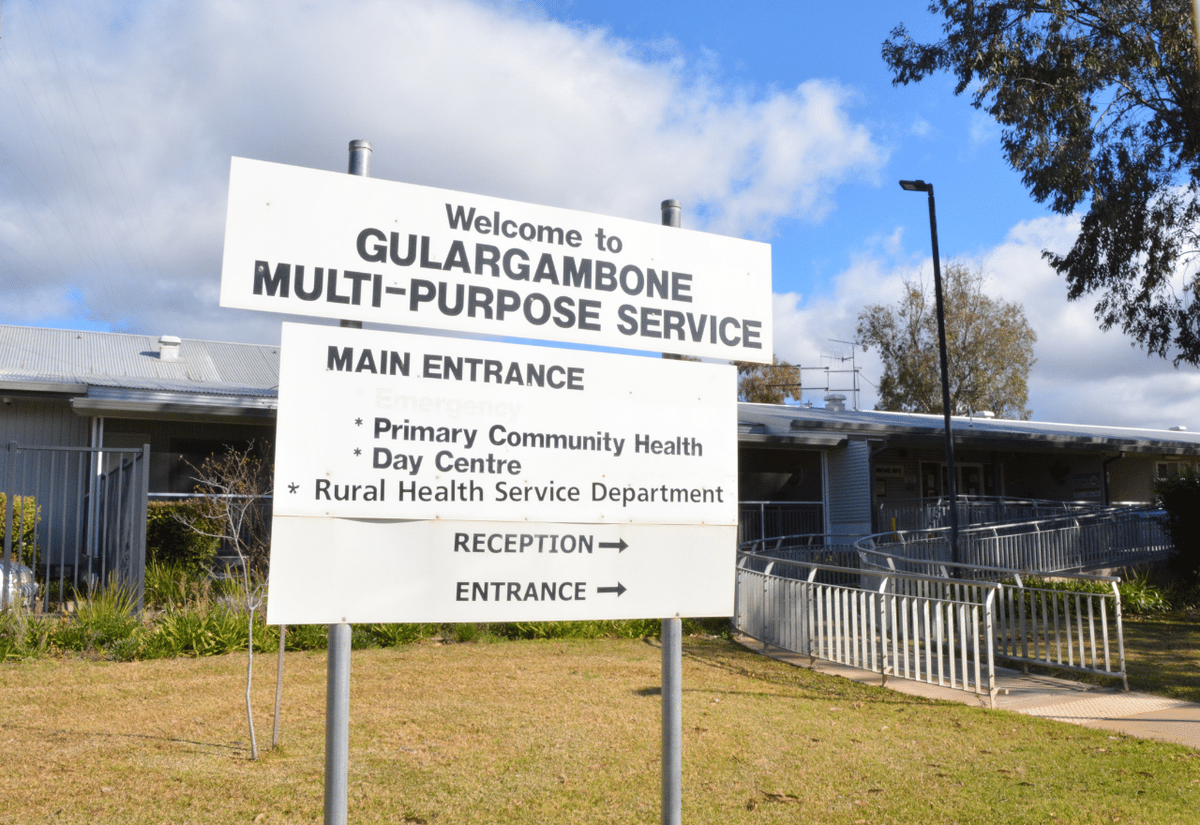Gulargambone returns another worrying sewage result
Oliver Brown
15 October 2021, 4:21 AM
 A lack of community awareness has been blamed for the low turnout at a pop-up testing clinic at the Gulargambone Multi-Purpose Service yesterday afternoon set up in response to recent positive sewage tests.
A lack of community awareness has been blamed for the low turnout at a pop-up testing clinic at the Gulargambone Multi-Purpose Service yesterday afternoon set up in response to recent positive sewage tests.The Gulargambone community has been put back on alert as the town returned yet another positive result for COVID from a sewage test sample.
Up to 8pm last night, the Western NSW Local Health District (WNSWLHD) recorded 14 new cases of COVID-19, including three in Bourke and two in Walgett, although the majority of cases were confirmed to not have been in the community.
Other cases were located in Dubbo (four), Oberon (three), Wellington (one) and Orange (one). The cumulative total of cases in the region is now 1538.
At this stage, zero cases have been identified as infectious in the community, with only one still under investigation.
Testing saw a large spike with 3573 tests taken across the region in the past 24 hours, compared to less than 2400 the day before, however, a spokesperson from the WNSWLHD confirmed the vast majority of the jump had come from an impressive turnout in Orange at various testing clinics yesterday.
Walgett has also seen a recent jump in testing over the past week, with more than 100 tests done daily between 8 and 14 October and a peak of 312 on 11 October.
As a result of this testing, up to 13 October, there was 15 people enrolled in WNSWLHD’s COVID Care in the Community program. Since then, another six new cases have been confirmed.
The situation in Gulargambone is more worrying with a disappointing response to sewage tests results flagging a possible local covid case.
A sewage sample taken on Wednesday 13 October returned a positive detection for fragments of the virus. This follows an initial positive detection on Wednesday 6 October.
Following the sewage result, a drive-through surveillance testing was clinic was run at the Gulargambone Multi-Purpose Service yesterday to try and identify any possible cases in the area.
According to the WNSWLHD, only 17 residents turned up for this clinic which was concerning for local residents like Gulargambone Post Office and Rural Transaction Centre Manager Tammy Nichols.
"It certainly does put the fear in you when you're working with members of the public every day," Mrs Nichols said.
"The number of tests is also a bit scary and a shame considering the last time we had a scare, nearly everyone in town went to get tested."
At the same time, Mrs Nichols said she didn't think there had been a lot of awareness spread about the clinic further than social media.
"I don't think that many people knew - I was only aware of it because someone had shared it with me through Facebook and I put a little sign up on our counter and told the local supermarket to help put the word out," she said.
"What's more, the ones I spoke to about it just told me they were double vaxxed and were under the impression they were safe and didn't need to get tested.
"I do think we just need to learn to live with it because it's not going anywhere any time soon - but it would still be handy to know about positive cases if you're regularly interacting with people in the community."
"You shouldn't have to rely on social media for that kind of information," added Tammy Jerrett from Gulargambone Central School.
"We only knew about the sewerage results because a parent rang the school. I don't think many knew about the testing."
The WNSWLHD spokesperson said it was unlikely further testing clinics would be set up in the town because the frequency of travel between the regions didn't guarantee there was a positive case in the community.